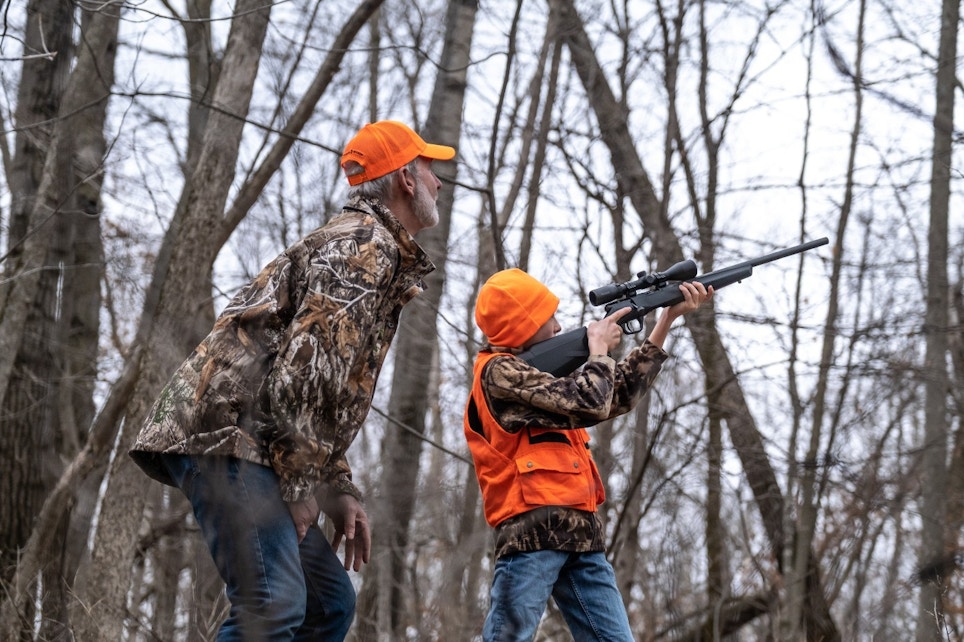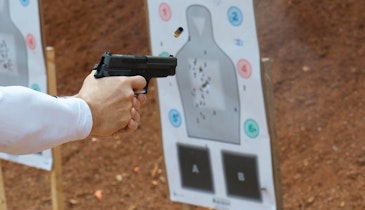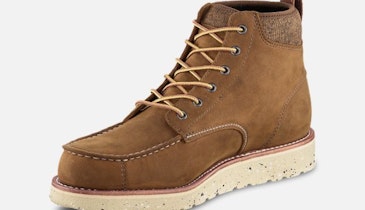Through the rise of specialized hunting gear, exotic destination hunts and slick multi-platform marketing campaigns designed to part hunters with their paychecks, we often forget how most hunters got their start: chasing rabbits, squirrels or upland gamebirds.
Small-game hunting is the best way to introduce a new hunter to the sport. It teaches wood skills, prioritizes gun safety and provides easy field-to-table meals. But in the brick-and-mortar retail landscape, the gear and equipment needed for small game hunting is often no more than an afterthought. There are viable reasons for that. While overall participation in hunting has ticked downward, small-game hunters have practically fallen off the cliff. A 2018 study in Minnesota illustrates that perfectly. That study found the fewest numbers of hunters going afield for species like grouse, waterfowl and squirrels since the DNR began tracking those figures in 1969.
Make no mistake, hard-core small game hunters have noticed they are being ignored by retailers.
“I don’t think negatively of my local shop because they don’t carry much for small-game hunters,” said Henry Rackliff, a New England bird hunter. “It’s not that they don’t care, it’s just that there doesn’t seem to be enough demand for them to focus their efforts on it. I get it, the profit margin on ARs and handguns is a heck of lot of better than on a box of 20-gauge shells.”
But small-game hunters (most of whom also pursue other species like deer and elk) can provide a decent revenue stream for gun and outdoor shops who decide to make a couple of tweaks in their product offerings. Remember, the hunter who started chasing squirrels with a hand-me-down .22 can grow up to be the hard-core upland bird hunter who spends thousands of dollars on dogs, clothing and shotguns. Retailers who decide to cater to the small-game niche can tap into customers more than willing to spend cash.
Thinking of specializing a bit more in the small-game crowd? Consider these retail approaches.
Guns and Ammo
Youngsters getting into small-game hunting don’t need much. Entry-level pump shotguns and a blaze orange vest are staples in every gun and outdoor shop that’s ever opened its doors, and the big-box stores are full of inexpensive options for these newcomers.
But discerning bird hunters? They are a different breed of consumers who aren’t afraid of spending decent amounts of money to get what they want. What they don’t want are the cheap, plastic shotguns that are churned out by the thousands by the chain retailers.
“I wish my local gun shop put some effort into carrying good, high-quality upland guns,” said Rackliff. “I look at those online all the time, but it’s a pain to try to buy guns online.”
Beretta, Benelli and Browning are three of the most popular brands making double guns for uplanders, but older, American-made guns from manufacturers like Parker, LC Smith and A.H. Fox are highly sought after and command premium prices.
Those older guns need special care and attention, too. “Given that many bird hunters enjoy hunting with ‘classic’ shotguns, I wish more outdoor supply companies carried low-pressure, low-recoil shotgun shells intended for use in these older guns,” said Tony Valentino, a New Jersey-based upland bird hunter.
Given the hassles of ordering specialized shotgun shells online, shops should investigate brands like Fiocchi or RST that make shells safe to use with the older, collectible doubles.
Footwear and Clothing
Sure, every type of hunting clothing ever known to humankind is only a few clicks away, but buying clothing and footwear often requires a tactile investment by the consumer: They want to try it on for size. They want to feel it. Is a jacket too heavy? Do the boots fit a wide foot or a narrow foot better? Online shopping can leave hunters dissatisfied.
“I’ve never seen decent brush pants or decent upland hunting boots at any outdoor store, which is too bad, since both of those items require proper fitting,” said Pat Berry, who spends much of his autumn following his English springer spaniels through ruffed grouse habitat in the Northeast.
Berry’s observation is backed up by Brian Dietz, a grouse and woodcock hunter in Wisconsin, who says while he’ll gladly buy electronics, dog collars and shells online, he puts a priority on trying on clothes and footwear at his local retailer before he decides to put down his credit card.
“For my local store, I want them to stock high-quality footwear, that is top-of-the-line hiking boots and not cheap deer-hunting boots or rubber boots,” said Dietz. “I’ll add gloves and pants to that, too, as online ordering is a crap shoot for determining comfort and fit.”
Brands like Filson and Columbia make higher-end small-game clothing. Danner and Irish Setter make some downright spectacular upland hunting boots. High-quality, hunting-specific socks, like those made by Darn Tough or Farm to Feet, appeal to small-game, waterfowl and big-game hunters alike.
Paul Edward of Massachusetts is a big proponent of high-performance footwear and is the kind of customer willing to pay for it.
“As I get older, I find the need for quality footwear — and that includes socks and insoles — more important,” Edward said. “I find myself ordering Darn Tough and Smartwool socks online, and it feels like Christmas when the packages arrive. I can make do with subpar gear in other areas these days, but with my feet? Not so much.”
Educational Programs
One of the biggest laments for newcomers trying to get into hunting is how to acquire the knowledge base on their own. Since the start of the COVID-19 pandemic, the number of first-time hunters has increased, with fish and wildlife agencies around the country reporting marked increases in license sales.
Retailers who cater specifically to hunters would do well to model the seminar method perfected by stores like REI, who bring in new hikers, climbers and campers with introductory classes. Small-game hunting represents one of the best ways to pique newcomers’ interest, but very few shops take the time to teach new hunters how to successfully go after rabbits or squirrels.
“Yeah, I’d like my local shop to sell good clothing and boots, but mostly I’d like to see the hunting community, and that includes retailers, promote small-game hunting to kids and newbies,” said Brad Hanson, who hunts just about anything that has a season in Vermont. “I’d like to see squirrel-hunting clinics. I’d like beagle clubs to have youth days for the kids who don’t have access to dogs. Retriever clubs could take new hunters out duck hunting. I think we all need to promote small-game hunting better.”







